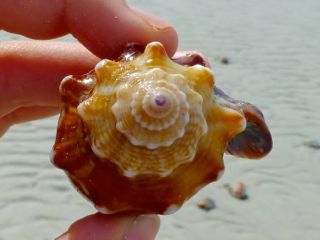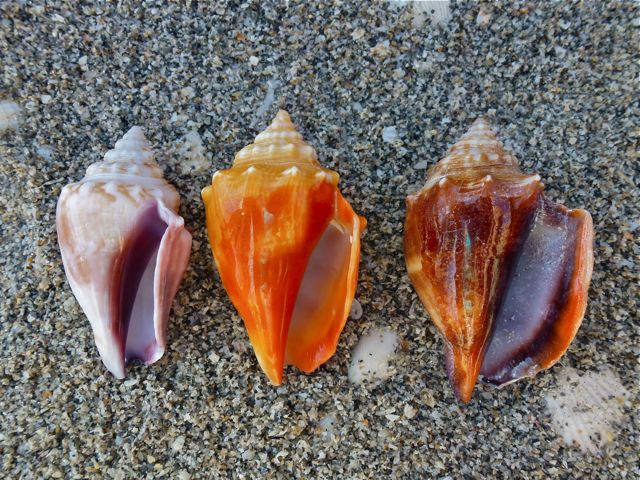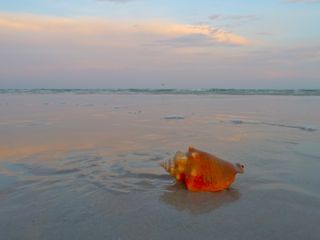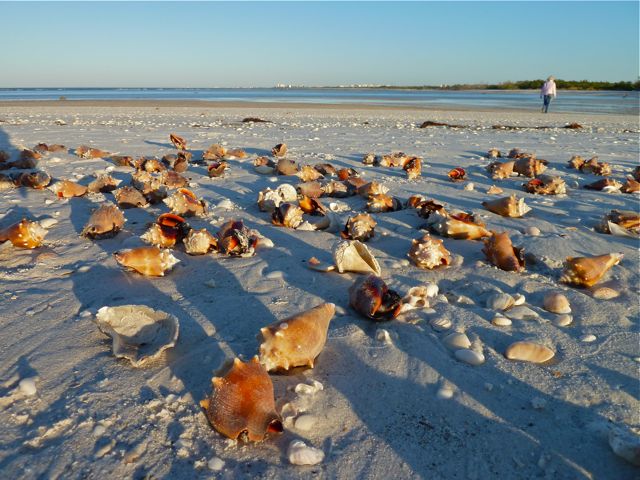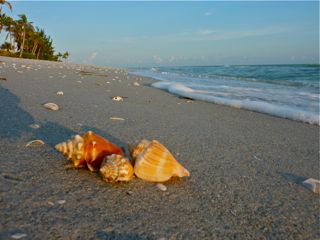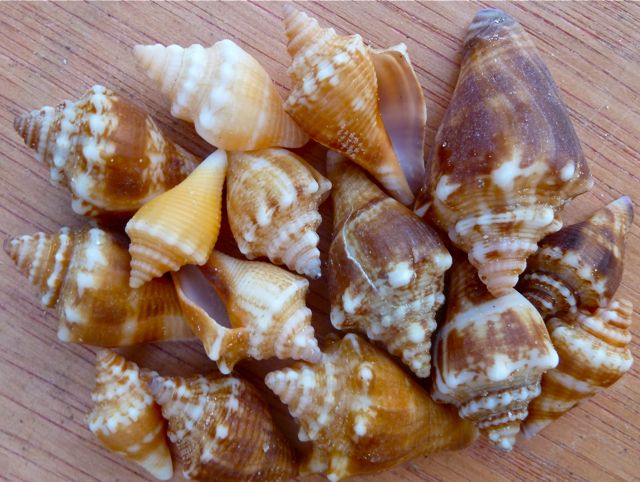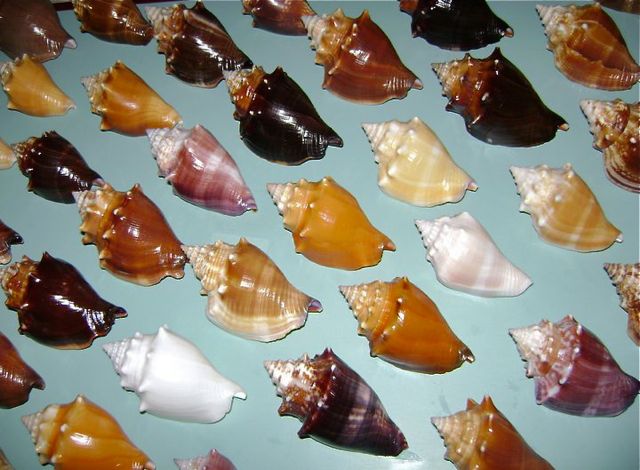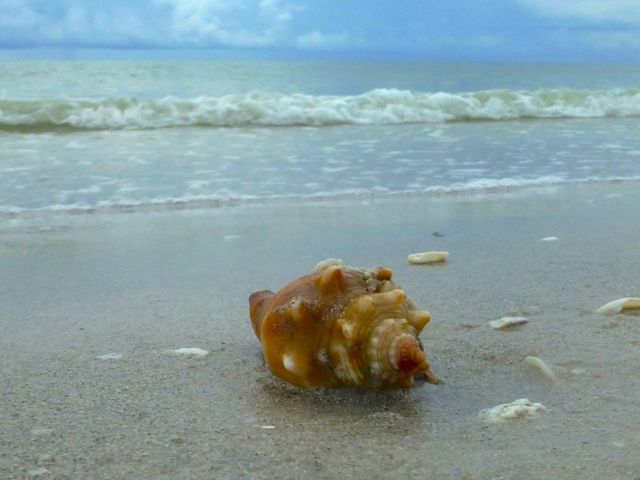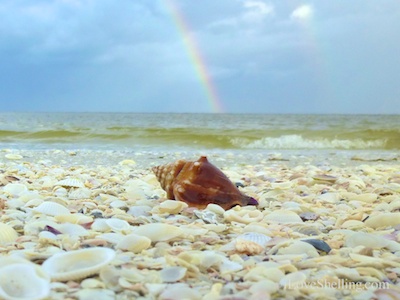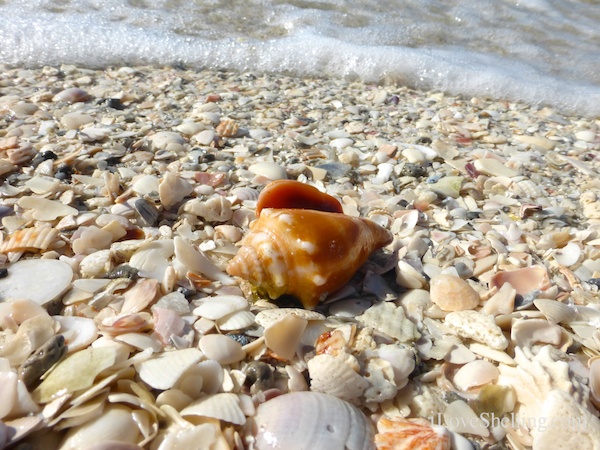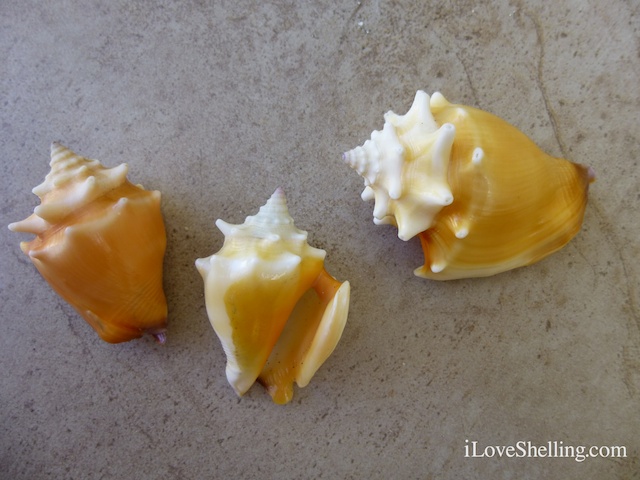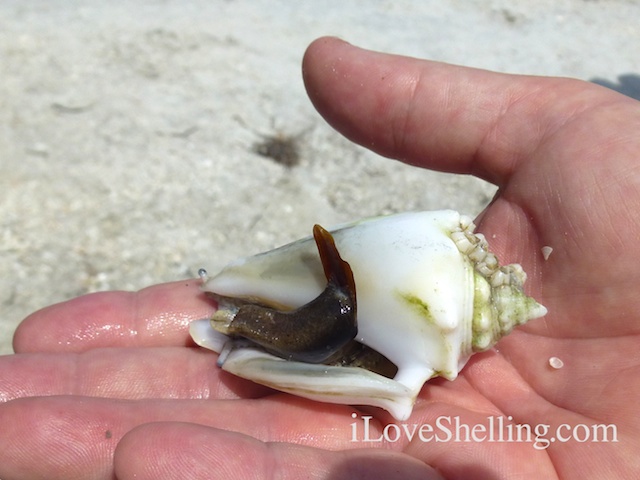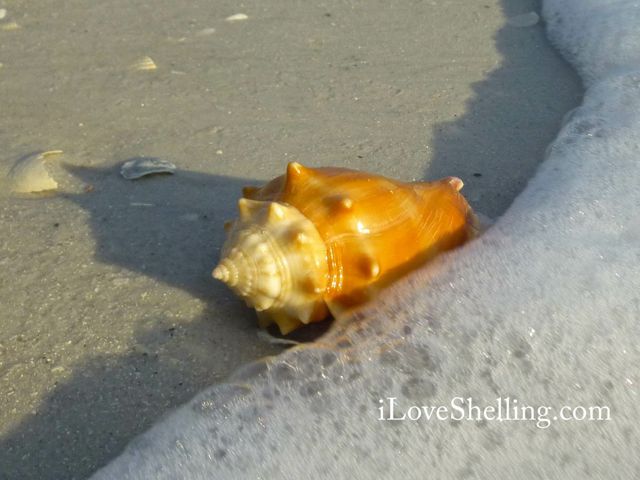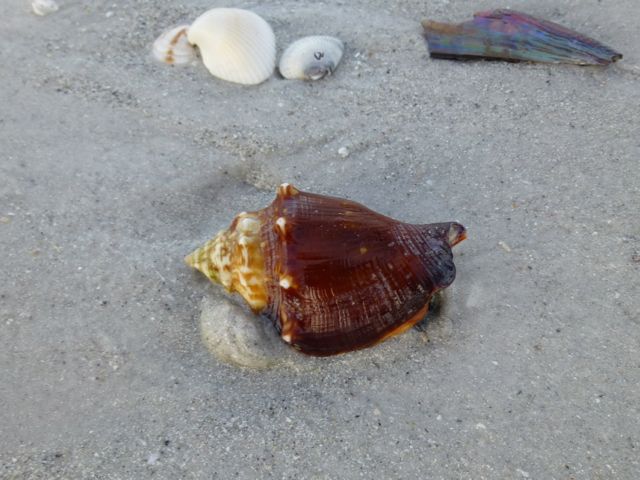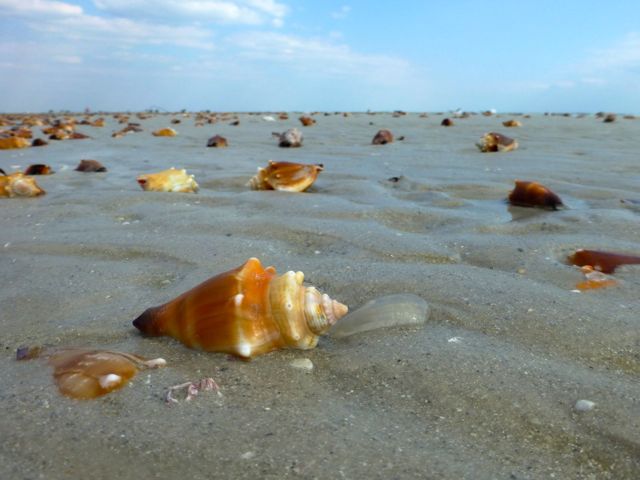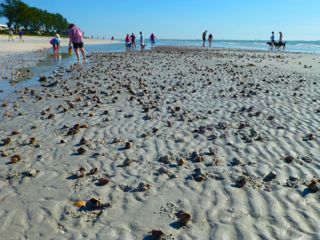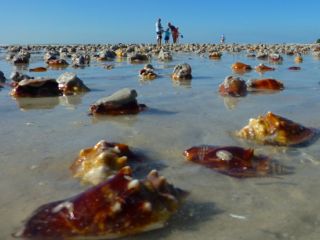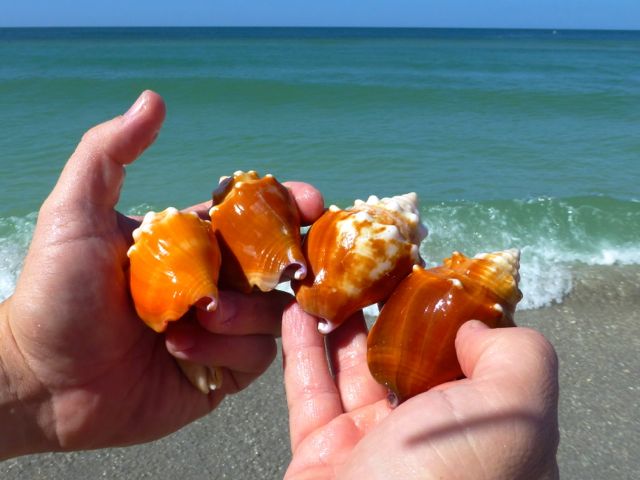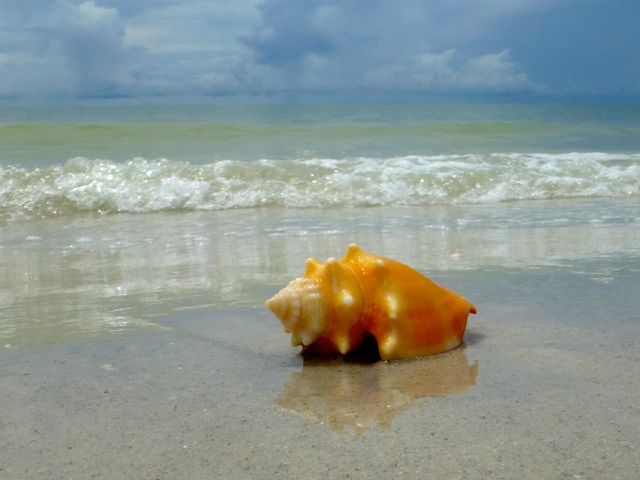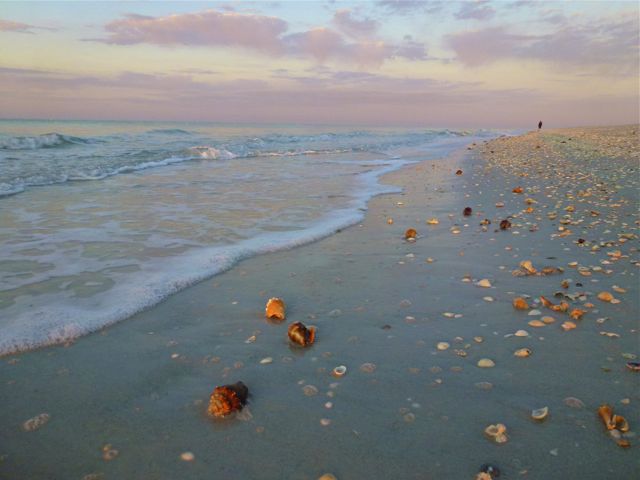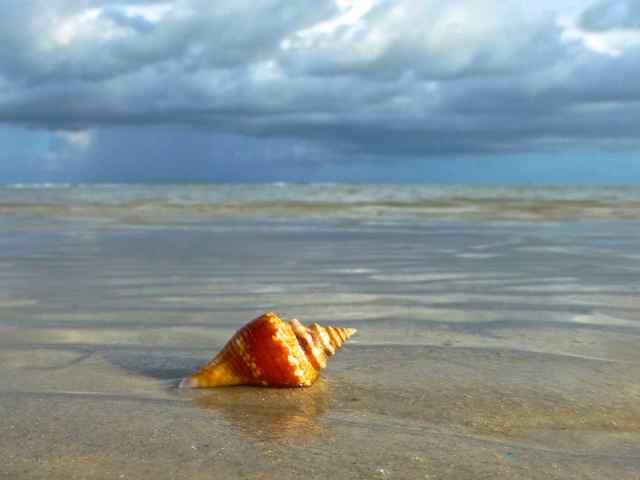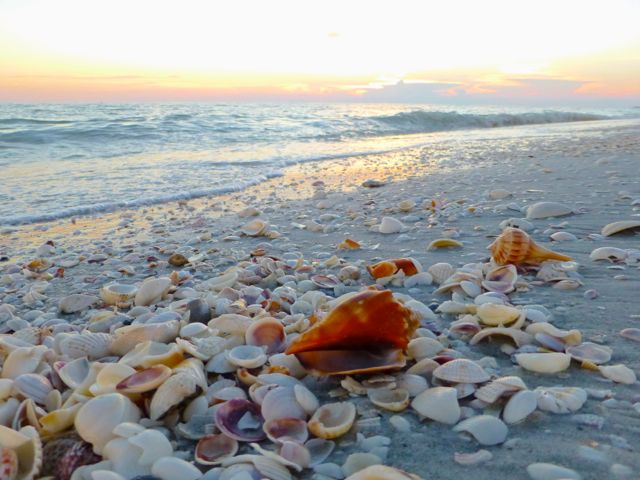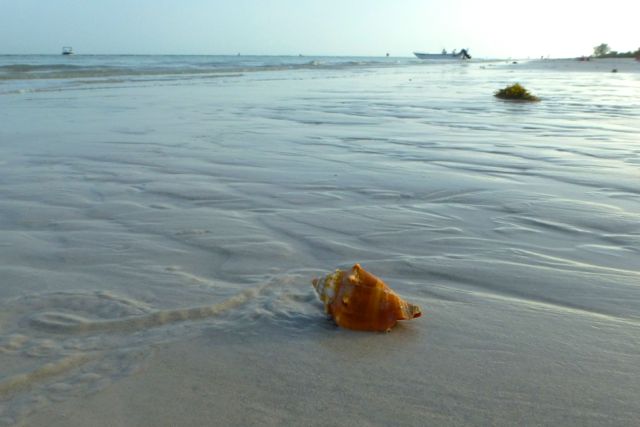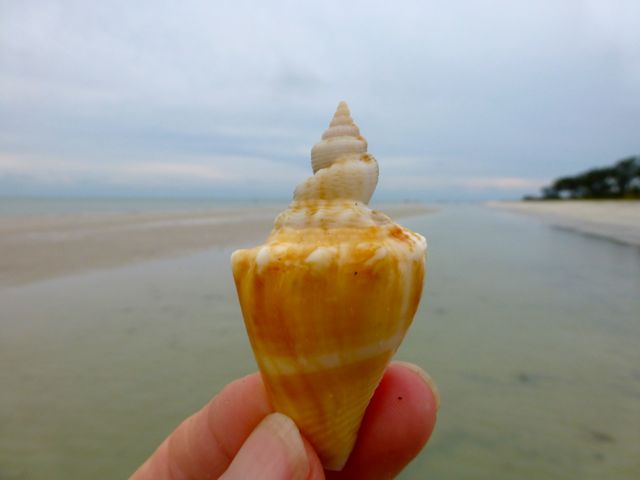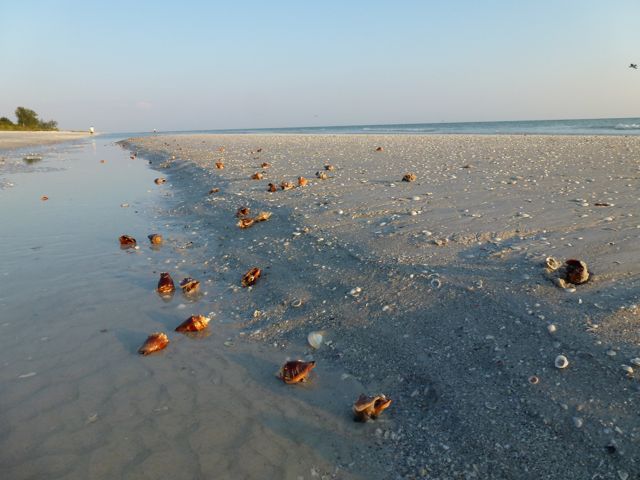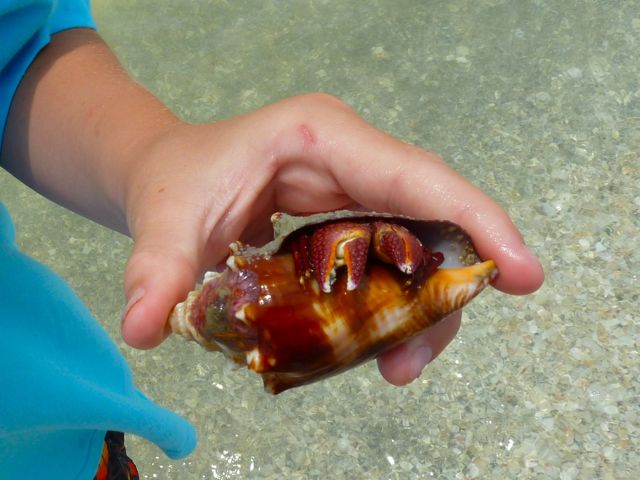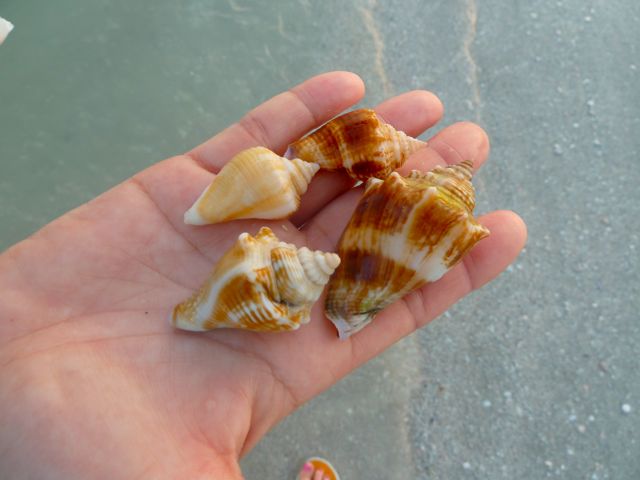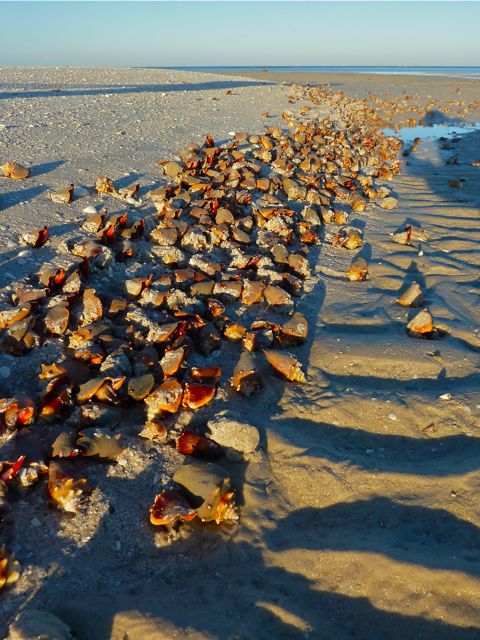Family Strombidae
Strombus alatus
Gmelin, 1791
Florida fighting conch – 110 mm (4.3 inches)
Common in SW Florida
(See where and when Florida Fighting Conchs were found CLICK HERE)
Juvenile Florida Fighting Conchs
CLICK HERE to see more photos of “juvie” Florida Fighting Conchs
Aperture view of juvenile FLORIDA FIGHTING CONCHS

DESCRIPTION
Strombus alatus, commonly known as the Florida fighting conch, contains a small, jagged spire at the top of the shell and about seven whorls.
The front of the shell is designed with two curved edges; these edges allow the eyestalks to look out from under the shell and become aware of its surroundings, keeping the rest of its body safe. The snout acts as a trunk, reaching out from under the shell to collect food. Here you can see a fighting conch’s soft-body, eyestalks and snout emerging from its shell.
HABITAT
These warm water shells can be found throughout the Gulf of Mexico, up to North Carolina, and across the Caribbean Sea, inhabiting sand banks and sea grass beds located in shallow water.
CLICK HERE to see posts of live Florida Fighting Conchs in their habitat
LIFE CYCLE
The eggs are released in a gelatinous egg string then sand adheres to its thick jelly-like sheath.
CLICK HERE to see more photos and story of these egg strings
COLOR FORMS
Multiple colors and patterns varying from white, tan, orange, brown, black and purple. Albinos are uncommon.
OTHER FORM VARIATIONS
Knobless Florida Fighting Conchs- The shoulders on these shells are smooth and missing the knobs (nodules). Theses are uncommon to find in SW Florida.
CLICK HERE to read more on Knobless Florida Fighting Conchs
Freak Florida Fighting Conchs – either cause by lack of food source, environmental issues or repairing from injury.
CLICK HERE to read more on Freaks.


Video of FLORIDA FIGHTING CONCHS…









